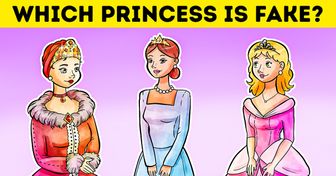My Friends Always Order Expensive Food and Expect Everyone to Split the Bill, Here’s What I Did

For years, Anna Lee Dozier believed she had simply scored a unique decorative piece. She bought the item in a thrift store, which was sitting on the clearance shelf near the checkout, for $3.99. What she assumed was a reproduction of a Mayan vase—only to later discover it was an authentic artifact over 1,200 years old. Now, it’s being returned to its rightful home.
Dozier purchased the vase about five years ago from 2A Thrift Store in Clinton, Maryland. As she was about to leave, a clearance shelf near the checkout caught her eye. One item stood out—a pottery piece that looked old, but not ancient, "It did look old to me, but not old-old, like 20 to 30 years old, maybe."
A member of a human rights organization, Dozier has worked closely with Indigenous communities in Mexico. Even before she realized its significance, the vase held sentimental value for her. "Since it’s a country that I work [in] and it’s really important to me, I thought it would be just a nice little thing to take home and put on the shelf and to remind me of Mexico," she said.
It wasn’t until January of this year that she started questioning its origins. While visiting Mexico City’s National Museum of Anthropology for work, she noticed Mayan vases on display that looked eerily similar to the one sitting in her home.
"Some of the things I was looking at looked awfully like what I had at home on my shelf," she said. "I still was dubious that it was real, but just thought it looked enough like that that I asked to speak to someone in the [museum] offices and just ask if I had something of interest, what would be the process to authenticate that."
Following a museum staff member’s advice, she reached out to the Mexican embassy, sending photos and measurements of the vase. Soon after, Mexico’s National Institute of Anthropology and History confirmed its authenticity. "I got an email saying, ‘Congratulations—it’s real, and we would like it back,’" she said.
The vase dates between 200 CE and 800 CE, during the Classic period of the Mayan civilization—a time often regarded as its peak.
To celebrate its return, the Cultural Institute of Mexico in Washington, D.C. held a formal repatriation ceremony, attended by Mexico’s Ambassador to the U.S., Esteban Moctezuma Barragán.
"I would like it to go back to its rightful place and to where it belongs. But I also want it out of my home because I have three little boys," Dozier tells WUSA. "I was petrified that after 2,000 years, I would be the one to wreck it!"
The vase is now being sent to Mexico’s Museum of Anthropology and History before being transferred to another institution.
Many people have asked Dozier why she didn’t try to sell it. Her answer is simple: "Giving it back feels so much better than it would if I put it on eBay and I got a bunch of money," she said. "It’s really important to recognize that some of these things, especially with such historical and cultural value to an entire country and people — you can't really put a number on that."
In the end, Anna Lee Dozier’s story reminds us that the true value of cultural artifacts lies beyond their price tag. Whether ancient or modern, these treasures carry histories worth preserving. Like Dozier, we can all play a role in protecting these stories, appreciating their significance beyond what meets the eye.
So, next time you find something special, remember it might hold a priceless history.











